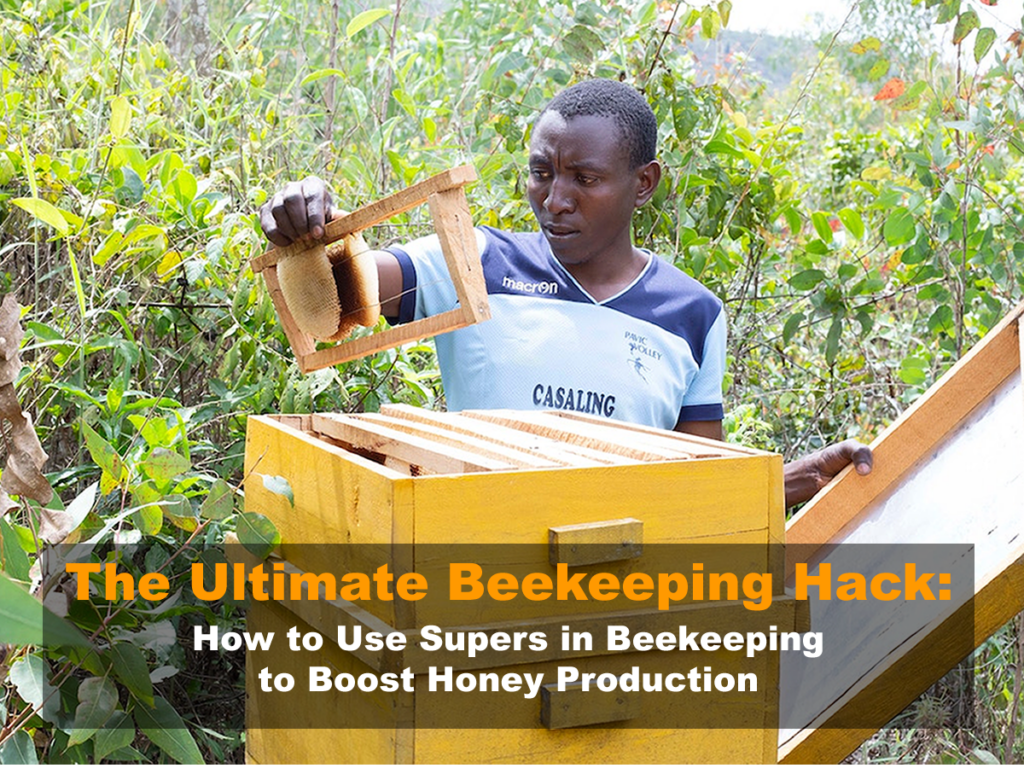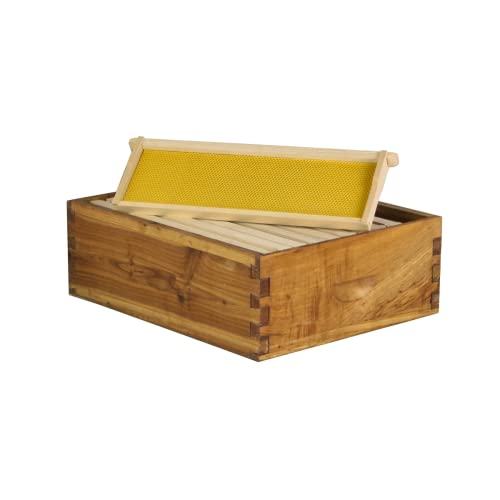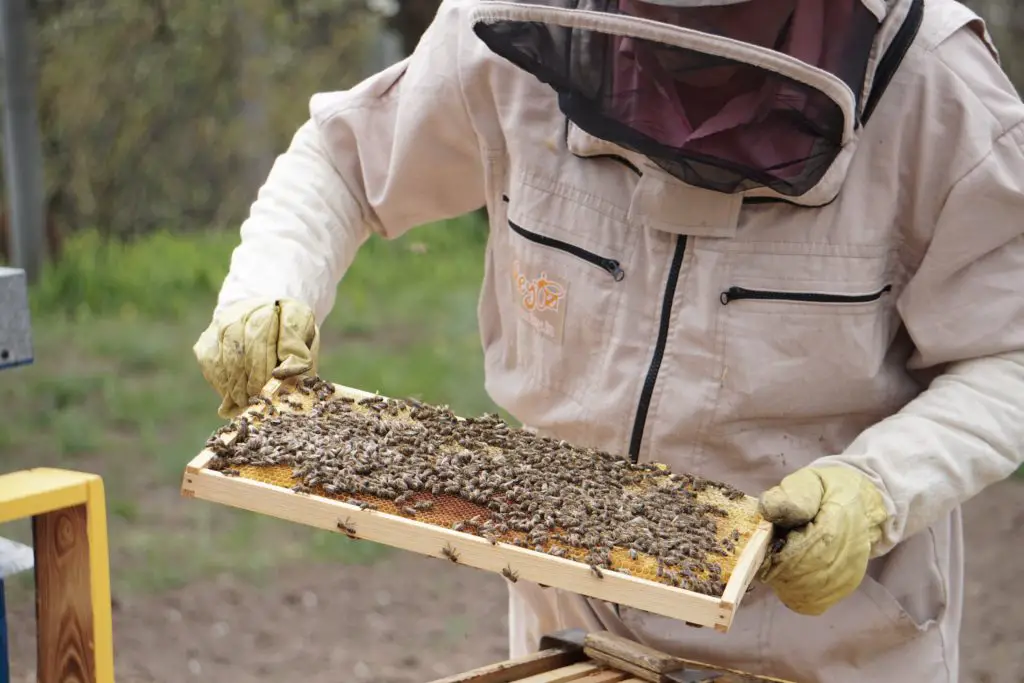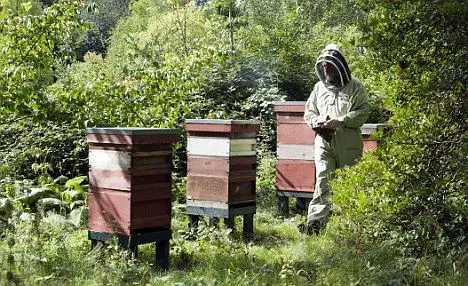Affiliate Disclaimer - As an Amazon Associate I earn from qualifying purchases.
It supports the website. So, Thank you
I remember when I first started keeping bees and how many terms there were to get used to. One of the first things I heard that confused the life out of me was a ‘super.’ Not wanting to look uneducated in front of my new beekeeping friends, I smiled politely at the term and rushed home to research it. So, what is a super in beekeeping and what is it used for?
The term super simply refers to the box that is used for the bees to keep their honey. This can be a separate box but some people use the word to describe the entire hive, although that’s not entirely accurate.
The word super is taken from the word superstructure which refers to something built on top of something else. In the case of beekeeping, that’s the box for storing honey.
If you’re new to apiculture and want to learn more about the hive setup then this guide is for you. I’ll be talking more about what a super is when to add one, and what size they typically are.
Table of Contents
What Defines A Super?
A superstructure, commonly referred to as just a super, is an additional box added on top of your hive for storing honey. This doesn’t have to be a permanent structure.
The main parts of your hive make up what beekeepers call the 365-hive. This simply means aspects that remain part of the hive 365 days a year. But supers can be added and taken away as necessary.
How Big Is A Super?
A super is normally either medium or shallow. However, you can really use any size you’d like, there’s no hard and fast rule. Do keep in mind that the reason shallow or medium supers are preferred is that they won’t be as heavy when it comes to moving them. Once they’re filled with honey, anything large will be challenging to lift.
In terms of measurements, most supers are either 5 ¾ “ for shallow or 6 ⅝ “ for medium. But regardless of the size, they’re always called a super.
What’s The Difference Between A Super And A Brood Box?
As I have mentioned, the term super comes from the word superstructure which is an add-on for your beehive. What some new beekeepers get confused with is which part of the hive is which and that means determining between the super and the brood box.
Brood boxes are permanent parts of the hive that are used for the queen who will lay her eggs here. Young bees are raised in the brood box and, up to a point, honey will be stored here too.
On the other hand, a super, sometimes called a honey super, is used only for storing honey. Beekeepers place them on top of their brood boxes in a stack-like formation.
One thing to keep in mind is that the queen will not be able to access the super, although worker bees can come and go freely, storing their honey here.
In order to keep the queen out of your honey super, it may be necessary to use a queen excluder. This isn’t essential but a lot of apiarists like to use one and it’s simply a metal or plastic bar that is placed above the brood box. There’s enough room for the workers to get through but since the queen is larger, she won’t fit. The benefit of this is that she won’t start laying eggs inside the super.
When Do I Need To Add A Super?
If you have a Langstroth hive then you will add your super to the top part of the hive. Understanding when to add a super means keeping an eye on what’s happening in the brood box. If there are ten frames and eight of them are filled with pollen, brood, and honey then it’s time to think about adding a super.
What I would say is to take action sooner rather than later. If you’re sitting on the fence and wondering whether adding a super now is the right thing to do then it’s definitely better to do it too early as opposed to too late. If you don’t add one in time then there’s a risk of the bees swarming and heading off to find a new home. In these cases, you could lose as many as half of the members of your colony.
That said, there are a few things to consider when adding a super to your hive early. The main problem comes from pests like moths which means you will need to keep a close eye on things.
Another question that new beekeepers ask is how many supers do I need to add to my hive? There’s no cut-and-dry answer to this question because it’s going to be different in every situation. You’ll need to use your judgement to figure out how many supers the bees will need until you return to the hive.
If you’ve got a well-established colony then it’s possible that they could fill a new super within just a couple of weeks. If you’re not planning to return before this, then I’d recommend adding an extra super.
Plus, over the course of the season, it’s a good idea to regularly inspect your hive to see whether any further adjustments need to be made. Beekeeping doesn’t take up huge amounts of time but paying close attention to what’s going on is of the utmost importance.
What Happens When The Super Is Full?
If you’ve got a full super then the good news is that it’s time to start harvesting your honey. Please keep in mind that you must leave plenty of honey for the bees. This is the food that they’ll use to survive through winter.
If you’re in your first year then it might be necessary to leave all of the honey for the bees and wait until the following year to harvest. Generally speaking, the bees will need around 50 lbs to survive through the winter.
Final Thoughts
There’s certainly lots of lingo to learn when you start beekeeping but don’t worry, it’s pretty easy once you get your head around it. A lot of people want to know what is a super in beekeeping and while it might sound fancy, it’s just a word used to describe the box added to the top of the hive to store honey.







